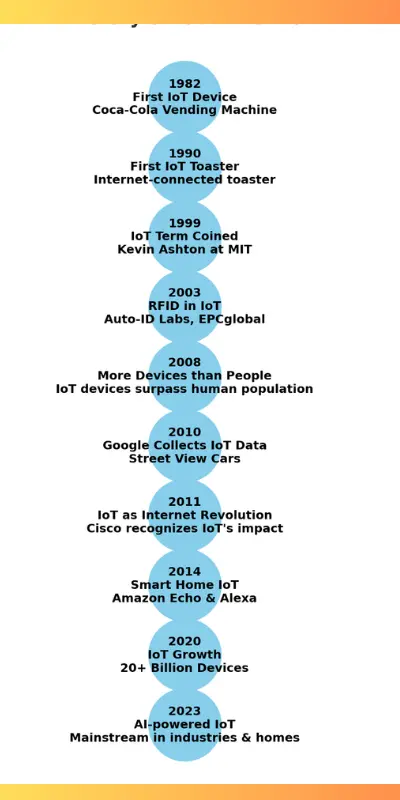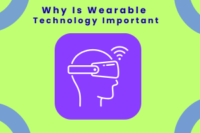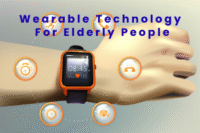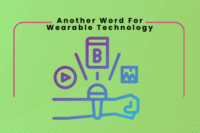What Is The History of The Internet of Things?
Published: 02 Feb 2025
The idea of connecting devices to the internet started in the early 1980s. A Coca-Cola vending machine at Carnegie Mellon University was one of the first IoT devices. It could report if drinks were available and cold.
In 1999, Kevin Ashton, a British technology expert, coined the term “Internet of Things” while working at MIT. The early 2000s saw the rise of smart RFID (Radio Frequency Identification) tags used in supply chains. By the 2010s, IoT expanded into homes, healthcare, and industries with devices like smart thermostats and fitness trackers.
Today, IoT connects billions of devices worldwide, making homes, cities, and industries smarter. When asking “what is the history of the Internet of Things?”, it’s clear that IoT has evolved from simple tracking systems to a global network that improves daily life and business operations.
Internet of Things (IoT) History Timeline
Let’s explore the events in the history of the internet of things and how they have transformed over the years.
- 1982 – Carnegie Mellon University’s Coca-Cola vending machine becomes the first connected device.
- 1990 – John Romkey creates the first internet-connected toaster.
- 1999 – Kevin Ashton coins the term “Internet of Things” at MIT.
- 2003-2004 – Auto-ID Labs and EPCglobal push RFID technology for IoT applications.
- 2008 – The number of connected devices exceeds the global human population.
- 2010 – Google starts collecting IoT data through Street View cars.
- 2011 – Cisco names IoT as the next major internet revolution.
- 2014 – Amazon launches Echo with Alexa, boosting smart home IoT adoption.
- 2020 – IoT devices surpass 20 billion worldwide.
- 2023 – AI-powered IoT systems become mainstream in industries and homes.
The internet of things timeline is illustrated in the diagram below:

Here’s the detailed explanation for each event in the history of IoT:
1982 – First Connected Device (Coca-Cola Vending Machine, Carnegie Mellon University, USA)
- Location: Carnegie Mellon University, Pittsburgh, USA
- Event: A group of computer scientists modified a Coca-Cola vending machine to connect to the internet. It could report the availability and temperature of drinks.
- Outcome: This became the first-ever smart device, showing that everyday objects could be connected to the internet.
1990 – First Internet-Connected Toaster
- Location: USA
- Event: John Romkey, a computer engineer, created a toaster that could be turned on and off via the internet using TCP/IP.
- Outcome: It proved that household appliances could be controlled remotely, setting the foundation for smart home technology.
1999 – The Term “Internet of Things” is Coined
- Location: MIT, Massachusetts, USA
- Event: Kevin Ashton, a British technologist, introduced the term “Internet of Things” while working at MIT’s Auto-ID Center. He discussed how RFID tags could help computers understand the physical world.
- Outcome: The term became the standard for describing the network of connected devices, leading to increased research and development in IoT.
2003-2004 – Auto-ID Labs and EPCglobal Promote RFID for IoT
- Location: Various research centers globally
- Event: Auto-ID Labs, a global research group, and EPCglobal pushed for the adoption of RFID (Radio Frequency Identification) to track and manage objects in supply chains.
- Outcome: This improved inventory management and logistics, making IoT applications more practical for businesses.
2008 – Number of Connected Devices Exceeds Global Population
- Location: Worldwide
- Event: The number of IoT-connected devices surpassed the number of people on Earth for the first time.
- Outcome: This marked a major milestone, proving that IoT was growing rapidly and impacting multiple industries.
2010 – Google Uses IoT for Street View Data Collection
- Location: Worldwide
- Event: Google’s Street View cars collected Wi-Fi data while mapping streets. This was one of the first large-scale IoT data collection initiatives.
- Outcome: It raised concerns about data privacy and the ethical use of IoT technology.
2011 – Cisco Recognizes IoT as a Major Tech Revolution
- Location: USA
- Event: Cisco, a global networking company, defined IoT as a major transformation in the way technology connects the world.
- Outcome: IoT gained more recognition from industries, leading to massive investments and development.
2014 – Amazon Launches Echo with Alexa
- Location: USA
- Event: Amazon introduced the Echo smart speaker, featuring Alexa, a voice-controlled AI assistant.
- Outcome: This popularized smart home technology and voice-controlled IoT devices.
2020 – IoT Devices Surpass 20 Billion Worldwide
- Location: Global
- Event: The number of IoT devices exceeded 20 billion, powering smart homes, industries, healthcare, and more.
- Outcome: IoT became a key part of daily life, with businesses and individuals relying on smart devices for convenience and efficiency.
2023 – AI-Powered IoT Becomes Mainstream
- Location: Global
- Event: Artificial intelligence (AI) became deeply integrated with IoT devices, improving automation and predictive analytics.
- Outcome: AI-driven IoT is now used in healthcare, manufacturing, and smart cities, making devices more intelligent and efficient.
Impact of Internet of Things (IoT) on Society, Politics, and Culture
Short-Term Effects
The Internet of Things (IoT) has quickly changed daily life by making smart devices more common. Homes, workplaces, and cities now use IoT for automation and efficiency.
- Convenience: Smart homes and wearable devices improve daily tasks.
- Business Growth: Companies use IoT for real-time tracking and automation.
- Privacy Concerns: Data collection raises security and ethical issues.
- Government Regulations: Laws on data privacy and cybersecurity are evolving.
Long-Term Effects
Over time, IoT will shape industries, social norms, and political landscapes. It will improve efficiency but may create risks.
- Smart Cities: Connected infrastructure will enhance urban living.
- Healthcare Evolution: Remote patient monitoring and AI-driven diagnoses will improve healthcare.
- Cybersecurity Challenges: Increased connectivity means higher risks of hacking.
- Economic Shifts: Jobs will change as automation replaces traditional roles.
- Cultural Adaptation: People will rely more on smart systems in everyday life.
Important Figures in the History of the Internet of Things (IoT)
1. Kevin Ashton
- Coined the term “Internet of Things” in 1999.
- Helped develop RFID (Radio Frequency Identification) technology.
- Worked on IoT applications for supply chain tracking.
2. Mark Weiser
- Known as the father of ubiquitous computing in the 1980s.
- Predicted smart devices integrating seamlessly into daily life.
- His vision laid the foundation for modern IoT.
3. Vint Cerf
- Co-creator of TCP/IP, the foundation of the Internet.
- His work enabled IoT devices to communicate over networks.
- Helped establish global internet standards.
4. Sanjay Sarma
- Co-founder of MIT Auto-ID Lab, a key player in RFID development.
- Advanced IoT in logistics, retail, and inventory management.
- Pioneered research on sensor networks for industrial use.
5. Peter T. Lewis
- First introduced the concept of IoT in 1985 at a conference.
- Envisioned machines communicating through networks.
- His work inspired early IoT innovations.
Different Perspectives on the History of the Internet of Things (IoT)
1. Technology Historians’ Perspective
- IoT is a major step in computing evolution, like the Internet itself.
- It builds on past innovations like RFID, sensors, and wireless networks.
- They see it as a natural result of the growing need for connectivity.
2. Business and Industry Perspective
- IoT is a game-changer for industries like healthcare, smart homes, and manufacturing.
- Companies see it as a way to improve efficiency and reduce costs.
- Some worry about high costs and security risks in IoT adoption.
3. Privacy and Security Experts’ Perspective
- IoT brings convenience, but it also raises concerns about data privacy.
- Many devices collect personal information, making them targets for cyberattacks.
- Experts call for stronger regulations and better security measures.
4. Everyday Users’ Perspective
- IoT makes life easier with smartwatches, smart homes, and connected cars.
- Some users enjoy the benefits, while others worry about surveillance.
- People want more control over their devices and data.
5. Government and Policy Perspective
- Governments see IoT as a tool for smart cities and public services.
- However, they struggle with regulating data protection and cybersecurity.
- Different countries have different rules, leading to global challenges.
Myths and Misconceptions About the History of IoT
1. Myth: IoT is a Recent Invention
- Fact: The idea of connected devices started in the 1980s with RFID and sensor technology.
- The term “Internet of Things” was coined in 1999, but similar concepts existed earlier.
2. Myth: IoT Only Means Smart Home Devices
- Fact: IoT is used in factories, healthcare, transportation, and agriculture.
- It helps with smart cities, self-driving cars, and industrial automation.
3. Myth: IoT Devices Work Independently
- Fact: IoT devices rely on cloud computing, data analytics, and networks to function.
- They need constant updates, security measures, and internet access.
4. Myth: IoT is Always Safe and Secure
- Fact: IoT devices can be hacked if they don’t have strong security.
- Many users don’t update their devices, making them vulnerable to cyberattacks.
5. Myth: IoT is Just a Trend That Will Fade
- Fact: IoT is growing fast and becoming a key part of daily life and industries.
- Experts predict billions of connected devices in the future.
| Conclusion |
|---|
|
If you ask, what is the history of the Internet of Things, it started many years ago. At first, people used simple machines to connect and share data. Over time, better technology like Wi-Fi, sensors, and smart devices helped IoT grow. The Internet of Things history timeline shows that the idea became popular in 1999 when the term “IoT” was first used. So, what is the history of the Internet of Things? It includes big changes, like using RFID tags, smart home devices, and faster internet. Many events in the history of the internet, like the creation of IPv6 and 5G, also helped IoT become what it is today. IoT is still growing and changing our daily lives. If you want to learn more, you can read about smart cities, self-driving cars, and wearable devices. Let me know if you need more details! |
FAQs
The Internet of Things (IoT) started in the 1990s, but the idea began earlier. In 1999, Kevin Ashton first used the term “Internet of Things.” One of the first IoT devices was a smart Coca-Cola machine at Carnegie Mellon University in the 1980s!
Yes! The Internet of Things (IoT) is a technology that connects smart devices to the internet. It allows things like smartwatches, home security cameras, and voice assistants to talk to each other and share data.
The Internet of Things (IoT) was invented in 1999 by Kevin Ashton. He used the term to describe how smart devices could connect and share data over the internet. Today, IoT is used in smart homes, healthcare, and industries worldwide!

- Be Respectful
- Stay Relevant
- Stay Positive
- True Feedback
- Encourage Discussion
- Avoid Spamming
- No Fake News
- Don't Copy-Paste
- No Personal Attacks

- Be Respectful
- Stay Relevant
- Stay Positive
- True Feedback
- Encourage Discussion
- Avoid Spamming
- No Fake News
- Don't Copy-Paste
- No Personal Attacks



